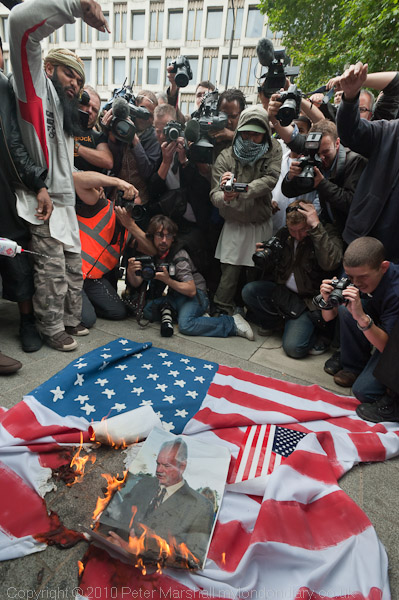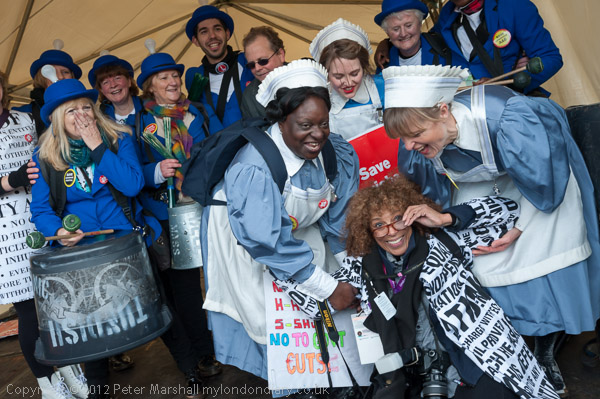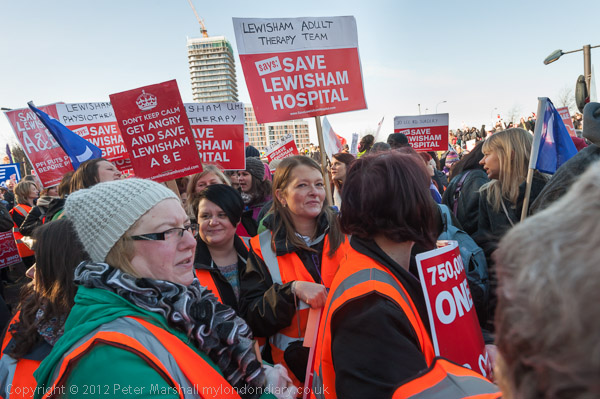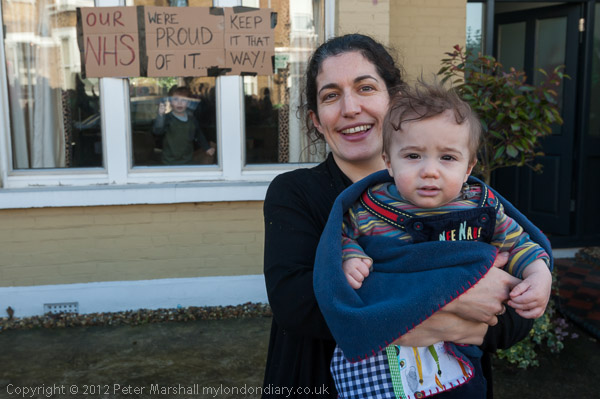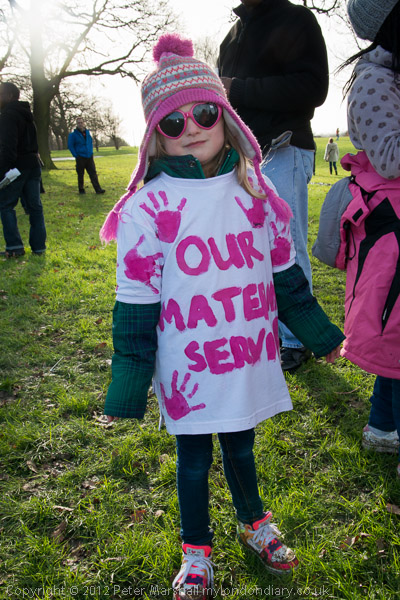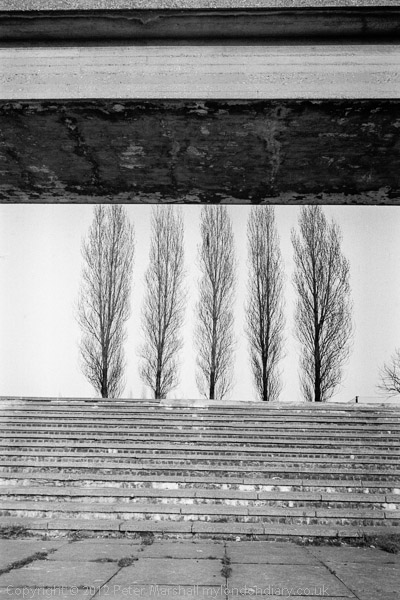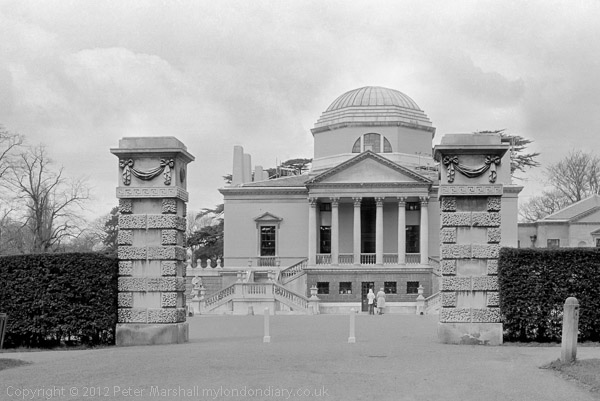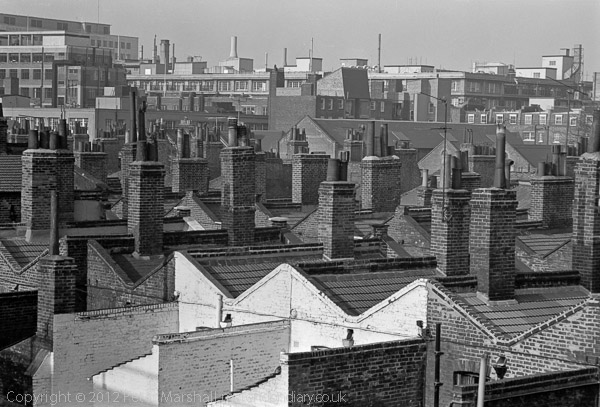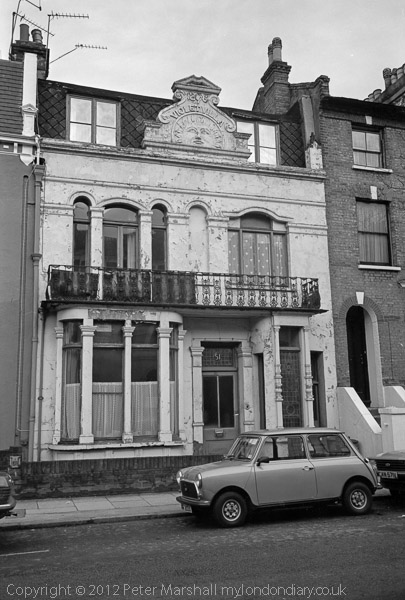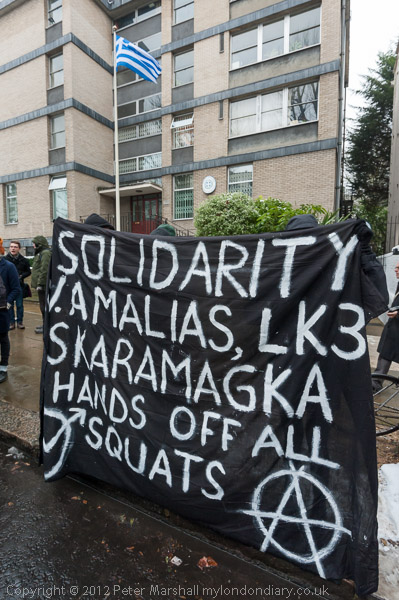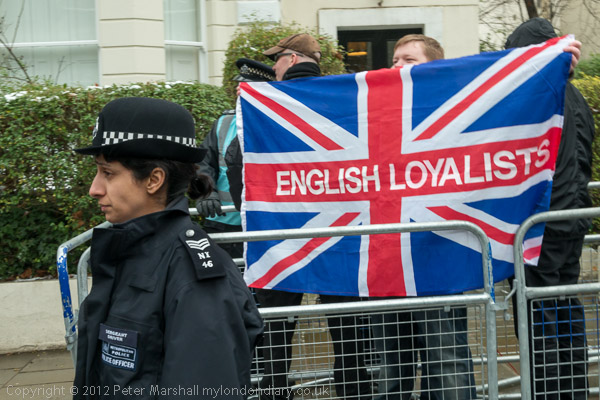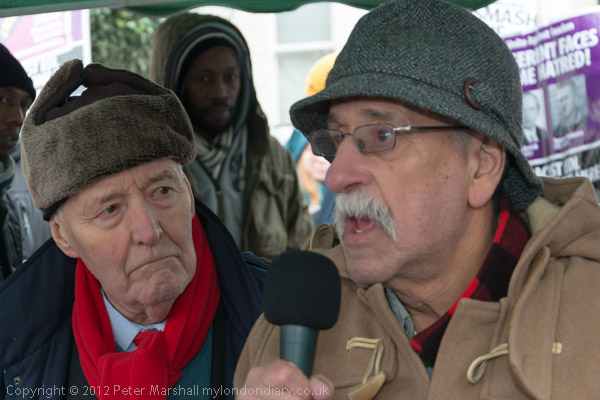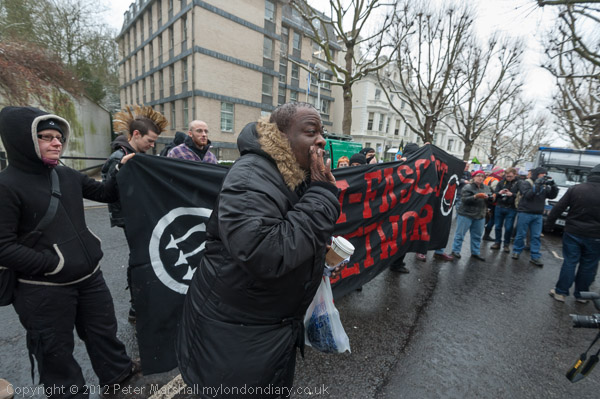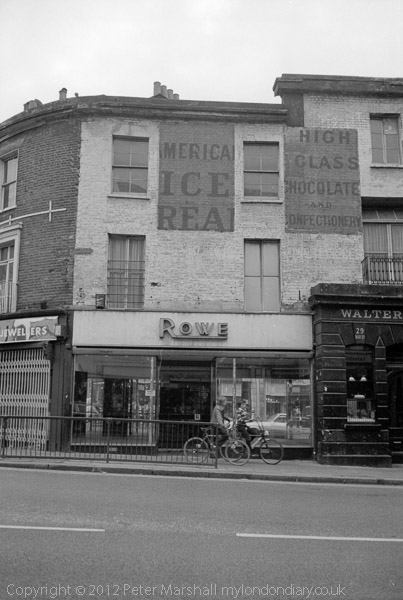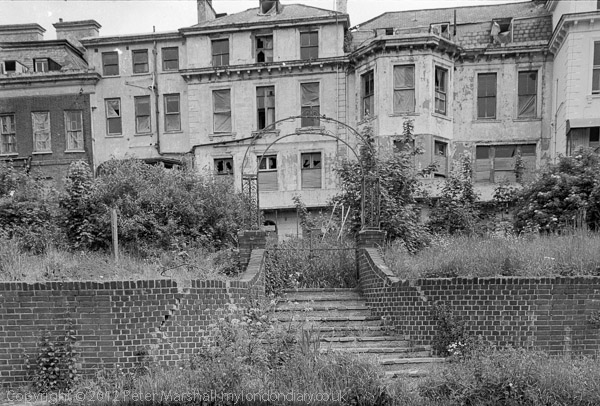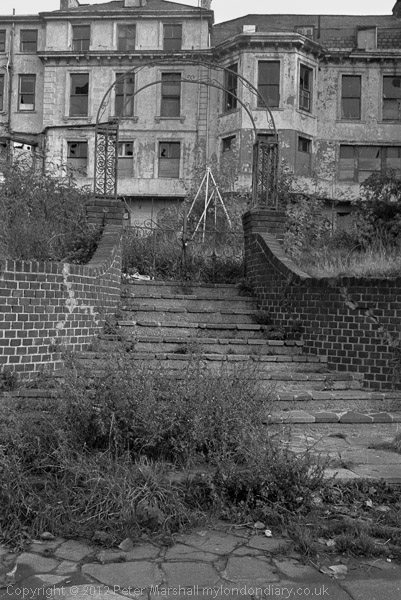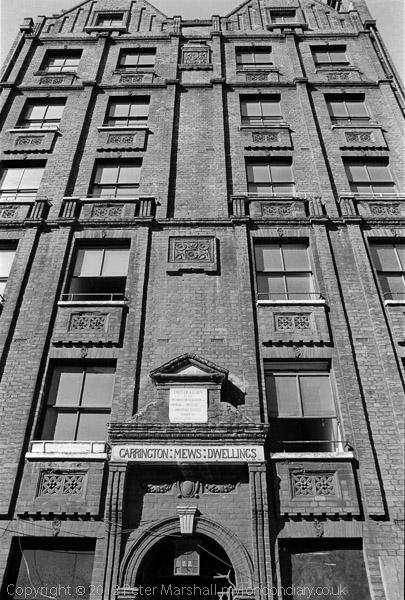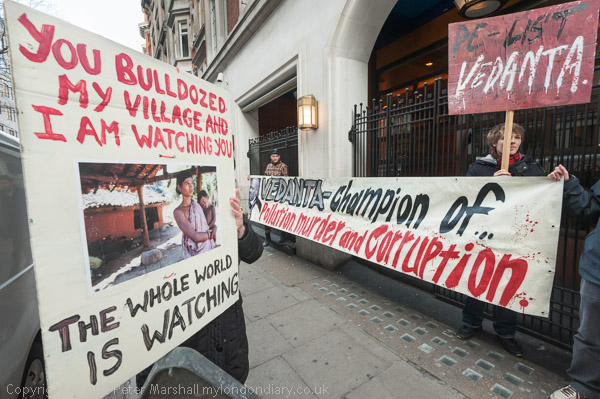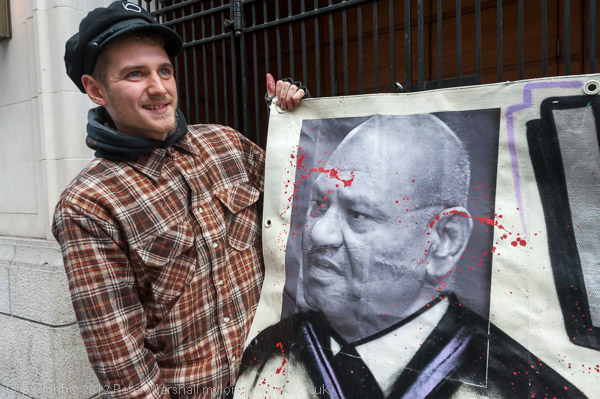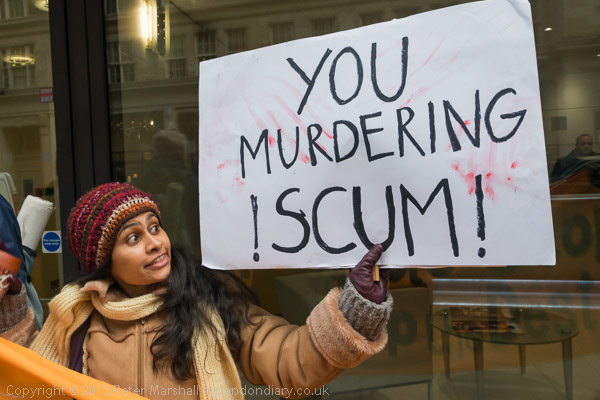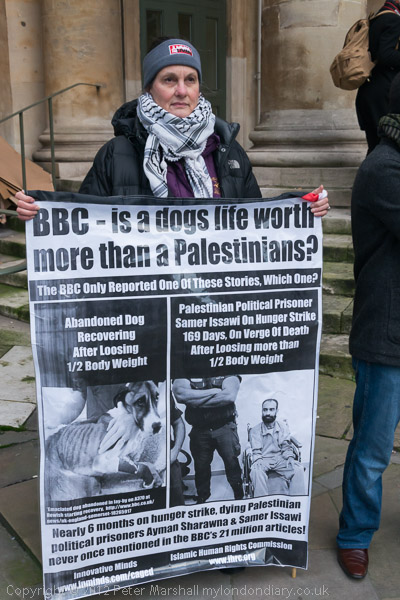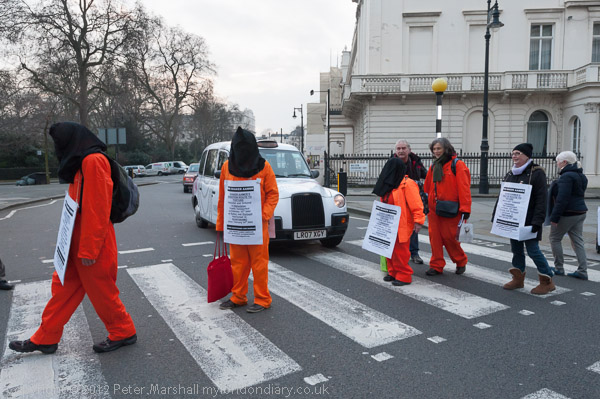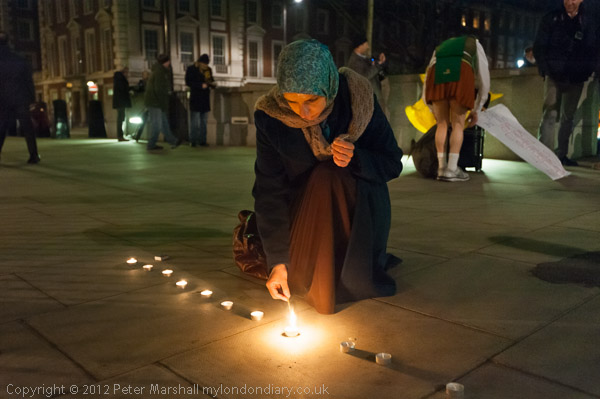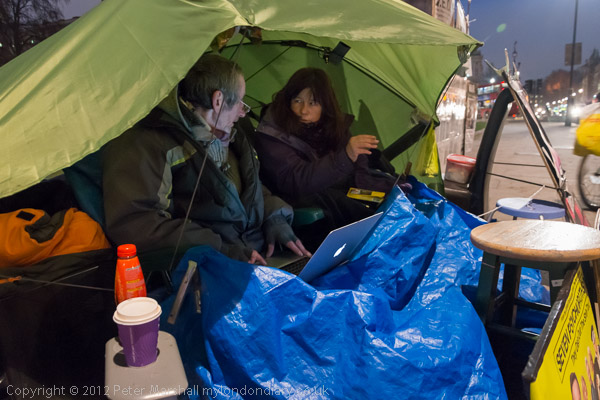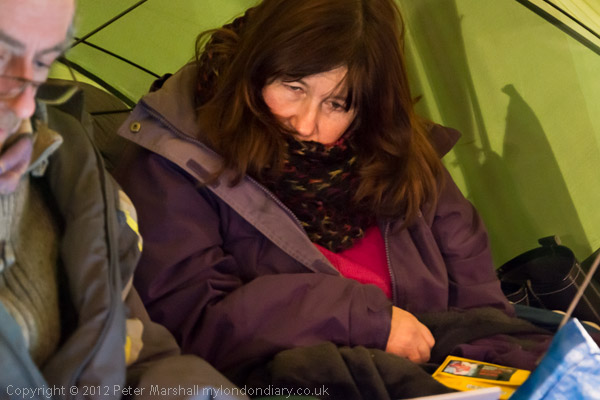A week ago at this time, a little after nine in the morning, I was standing on the platform at my local station, waiting in a bitter wind for the train to take me to London. It was, for England, cold, around a degree or so above freezing. I don’t like cold weather, though I’d more or less dressed for it, with an extra layer under my thin coat and long johns under my lightweight trousers, an extra pair of socks and of course a scarf and hat, and I was keeping warm enough, though getting rather too hot when actually sitting on the train and bus which took me to Notting Hill for the Pussy Riot London Solidarity Demonstration close to the Russian embassy.
The cold weather had obviously put off protesters and when I arrived at the pen more or less opposite the embassy there was only one lone protester standing there with his placard. Across the road closer to the gates of the private road on which the several embassy buildings stand – and in which neither protests nor photography are permitted – was a small group of people, one photographer I knew talking to several students, some also with cameras who had also come for the protest, but decided not to stay.
As they got ready to walk off, I went across the road to photograph the one man in the pen, and the other photographer followed me and we talked to him and took a few pictures of him and his placard with the embassy in the background. Soon we were joined by another photographer, making it three to one.
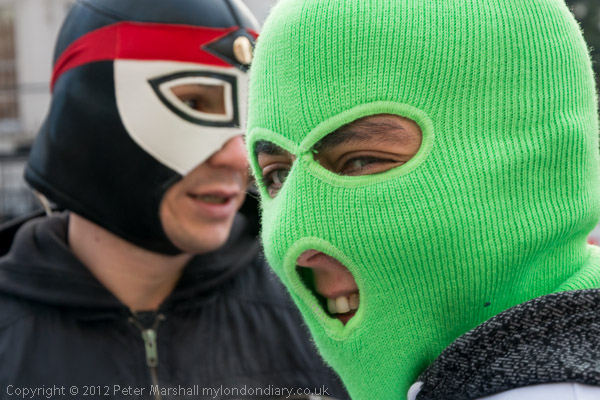
This was half of those at the London protest when I took the picture
By now I was wondering what to do. There didn’t really seem to be much of a story here, although it was a part of an international day of protest in support of the jailed Pussy Riot protester Maria Alyokhina, the London event was rather disappointing. I was standing in the cold and had at least half an hour before it was time to start my journey to my next appointment. It was too early to go to the pub, and I didn’t feel like a coffee. Fortunately another protester arrived, doubling the size of the protest, so the three of us talked to her and took more pictures. Then a few minutes later two men came, doubling the number again. More pictures. I was now expecting a group of four to arrive, and it was getting close to the time I had to think about taking a bus. Just as I’d said goodbye, rather disappointing a single further protester came to join, and I took a final picture or two before rushing to the stop. The protest was due to continue for almost another couple of hours and given the weather if I’d been going to protest I wouldn’t have been in any hurry to get there on time.
I like bus journeys in London, at least on double-deckers, where the top deck gives you an elevated view of the city and the streets, but they are seldom a rapid mode of travel. On foot the journey to the Royal Courts of Justice – around three and a half miles – might have taken me an hour, and the bus (taking a slightly less direct route) shaved five minutes off that. But it was warm, and saved me getting tired carrying a heavy bag. Underground is faster, though it involves more walking and I miss the view, but perhaps more importantly I can ride the buses for free but have to pay on the tube.
At the court I was surprised to find not one protest but two taking place. I’d come to photograph the Mental Health Resistance Network and Disabled People Against Cuts supporting a judicial review of Work Capablility Assessments on the grounds they violate the Equality Act by not being accessible for those with mental health conditions. They were setting up their protest on one side of the entrance, but in a pen on the other side were a large group of protesters with placards against psychiatrists and their dosing kids with dangerous medicines – Stop Psychiatry Drugging Kids.
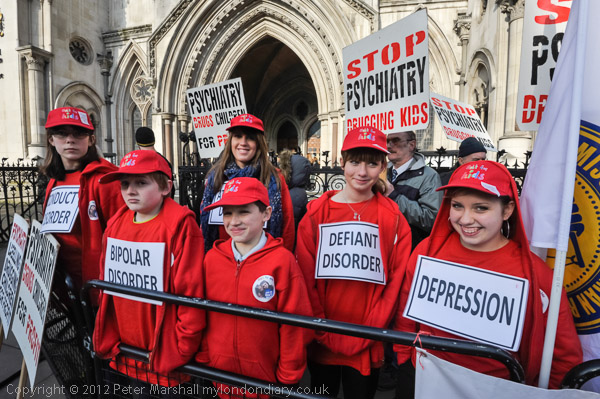
There was something in this second group that made me feel a little uneasy. In part it was the organisation, with neatly lettered large placards, red hoodies, and t-shirts, just too organised for a normal protest, more like a PR stunt. And though some of the things they were saying about the medicalisation of normal behaviour and the profits made from this by the drug companies are pretty sound, the name of their organisation, the Citizens Commission on Human Rights worried me. If it was a genuine citizen’s organisation I should certainly have come across it before. There were a few people wandering around with clipboards and at first I thought perhaps this was being organised for a TV film, but then I met a man in a white coat with a stethoscope and a batch of labelled pill bottles who threw me a dose of woo woo science and the penny began to drop. I still took some pictures and wrote up the story, because despite what they represent, from what they told me I felt the actual case they were protesting was a good one to protest.
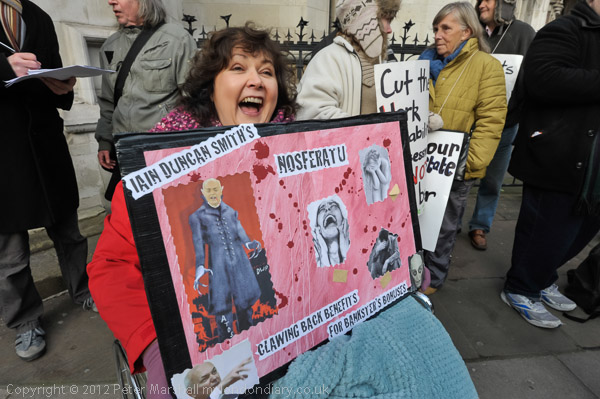
But the MHRN and DPAC’s Equality Protest Against ATOS Work Assessments was a more important protest, and one that effects many thousands of disabled people who are ‘being put through a traumatic and harrowing experience needlessly’, losing their benefits through incorrect decisions by tests administered by ATOS which the government’s own assessor has ruled ‘unfit for purpose’. It is an inhumane policy imposed by a doctrinaire government that seems to be taking a sadistic delight at creating hardship for the poor and disabled, with a total lack of understanding or empathy for those who suffer – and in some cases are driven to suicide.
The policy was the subject of a parliamentary debate last week and I’m pleased that at least one of the papers used one of my pictures from the protest. Parliament was clearly concerned by what is happening, although the government remained unmoved and unrepentant. This is certainly one of the nastiest policies of a cabinet that simply has no idea of the problems faced by those without millions in the bank. We need welfare reform, but unfortunately the Labour government set it off in the wrong direction, based simply on cost cutting rather than developing caring and personalised solutions that would actually be more cost effective. Real assessments of people’s capabilities would make possible support that enabled them rather than leaving many contemplating suicide.
Another, slightly shorter, bus ride warmed me up and took me back west to the US Embassy in Grosvenor Square, where a regular protest in solidarity with Bradley Manning was being held on day 963 of his detention, as his defence were arguing at Fort Meade that his case should be dismissed because fo the failure to bring him to a ‘speedy trial’. The protesters, who were going on to the Ecuadorian embassy to join the daily vigil there in support of Julian Assange, were there to Stand with Brad at US Embassy. They stood in silence, their backs to the hedge, facing the US flag and eagle on the top of the of the building as they played the soundtrack of a video, ‘Collateral Murder’, showing war crimes by US forces, allegedly leaked by the ‘courageous whistleblower’ and published on Wikileaks, leading to Manning’s arrest and the US attempts to get Assange into their hands via Sweden.
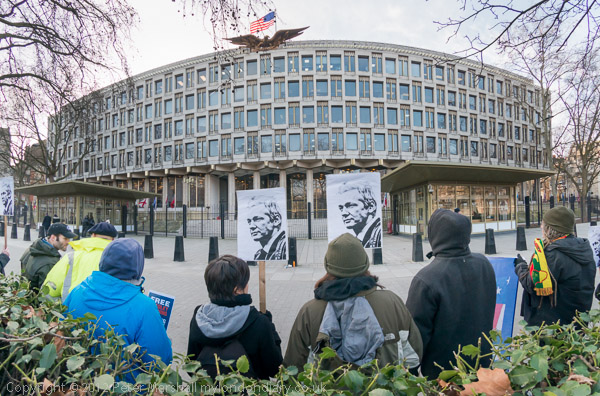
I made this picture stretching across the wide hedge, holding my D800 with the 10.5mm DX fisheye at arms length. It was tricky holding the camera level and getting the framing right, and it might have been useful if I could have remembered how to use ‘Live View’ though I’m not sure I could really have seen clearly enough. As always photographing flags can be a bit of a lottery, and I was lucky to get one frame where everything was right with the wind holding the flag right out above the eagle. The curve given to the embassy by the fisheye (and corrected to cylindrical perspective to get all the verticals upright) actually greatly improves the rather boring architecture) and the horizontal angle of view of around 140 degrees enabled me to get in around half of the line of protesters.
I left them as the soundtrack was still echoing from the front of the embassy, and again more protesters were still arriving, but I was cold and had had enough. It was time for another bus and then the train home.
________________________________________________________
My London Diary : Buildings of London : River Lea/Lee Valley : London’s Industrial Heritage
All photographs on this and my other sites, unless otherwise stated are by Peter Marshall and are available for reproduction or can be bought as prints.
To order prints or reproduce images
________________________________________________________
